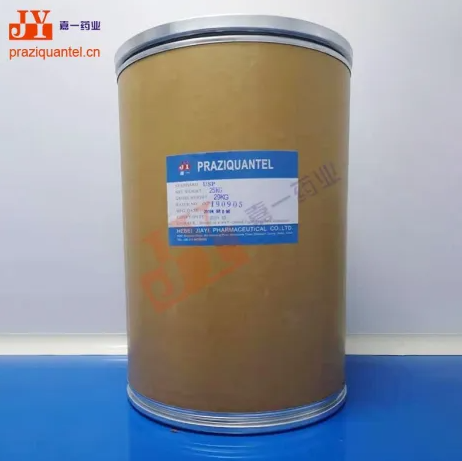Praziquantel USP: The Effective Antiparasitic Agent
Praziquantel is an anthelmintic drug commonly used to treat various parasitic infections, including tapeworms and schistosomiasis. It is a member of the isoquinoline family of compounds and was first discovered in the 1970s. Since then, it has become one of the most widely used antiparasitic drugs worldwide.
Praziquantel USP is the United States Pharmacopeia's official standard for the drug's identity, purity, strength, and quality. USP is a non-profit organization that sets official standards for drugs, dietary supplements, and other healthcare products in the United States. The USP standards are recognized and used in over 140 countries worldwide.
Mechanism of Action
Praziquantel is effective against various parasitic infections because of its unique mechanism of action. It works by increasing the permeability of the parasites' cell membranes, causing them to become paralyzed and die. Praziquantel's effect is most pronounced on the tegument, the outer layer of the parasite's body. This causes the parasite to lose its ability to resist the host's immune system, leading to its elimination from the body.
Uses
Praziquantel is used to treat a variety of parasitic infections. Its most common use is against tapeworm infections, which occur when a person ingests the larvae of a tapeworm. Praziquantel is effective against both adult tapeworms and their larvae. In addition to tapeworms, praziquantel is also used to treat schistosomiasis, a parasitic infection caused by a blood fluke that affects millions of people worldwide.
Schistosomiasis is one of the most prevalent parasitic diseases in the world, affecting over 240 million people globally. The disease is caused by several species of Schistosoma flukes and is transmitted through contact with contaminated water. Symptoms of the disease include abdominal pain, diarrhea, and blood in the urine. Praziquantel is the drug of choice for treating schistosomiasis and has been shown to be highly effective in clinical trials.
Explore more:What is PBAT Plastic? Eco-Friendly Alternative Explained
How do you get xenon gas?
Unlocking the Power of N-tert-butoxycarbonyl 4-piperidone
Are High Purity Powder Coating Raw Materials HPMC the Game Changer for Sustainability in the Coating Industry?
What is the cause of color in iron oxide pigments?
What is the industrial use of magnesium oxide?
What are the different grades of HPMC?
Dosage and Administration
Praziquantel is available in various forms, including tablets, capsules, and oral suspensions. The dosage and administration of praziquantel depend on the type of infection being treated and the patient's weight. For tapeworm infections, the usual dosage is a single dose of 5-10 mg/kg. For schistosomiasis, the usual dosage is a single dose of 40-60 mg/kg.
Side Effects
Like all medications, praziquantel can cause side effects. The most common side effects include nausea, vomiting, abdominal pain, and headache. These side effects are usually mild and go away on their own within a few days. In rare cases, praziquantel can cause more severe side effects, such as seizures, hallucinations, and allergic reactions.
Conclusion
Praziquantel USP is a highly effective antiparasitic agent that has been used for decades to treat tapeworm and schistosomiasis infections. Its unique mechanism of action makes it effective against a variety of parasites, and it is well-tolerated by most patients. With its official standard set by the USP, praziquantel USP ensures the highest quality and purity of the drug, which is essential for its safe and effective use in clinical practice.
If you want to know more information about praziquantel USP, please contact us. We will provide professional answers.
Best tips for streamlining PBAT manufacturing process?
Discover the Top Xinnuo Lixing International Trade Products to Elevate Your Business!
Where can you find ethylene?
Trending: Hydrophobic Powders Available Now in Stock
What is the purpose of SBR?
Ultimate Guide to High Quality HPMC: Answers to Google's Top FAQs
Revolutionizing Hygiene: Silver Nano Antibacterial Agent Dominate?











